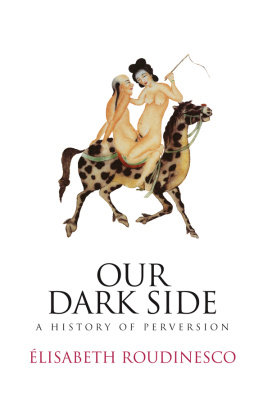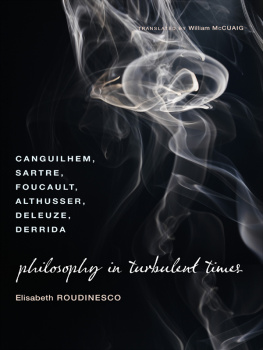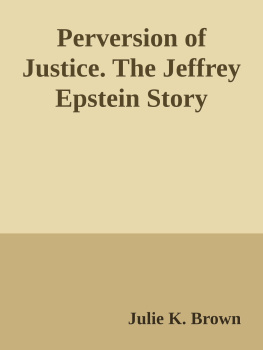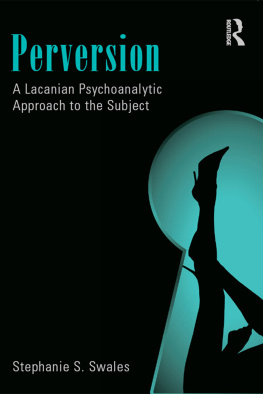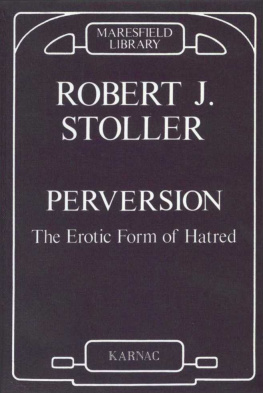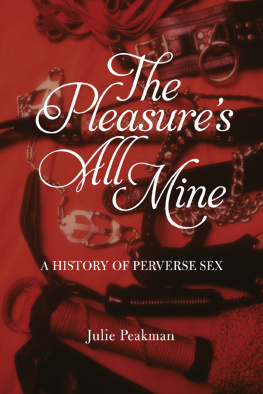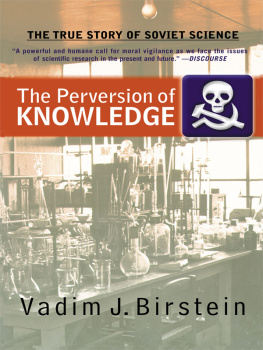
Table of Contents
First published in French as La Part obscure de nous-mmes: une histoire des pervers Editions Albin Michel S. A. Paris 2007
This English edition Polity Press, 2009
Polity Press
65 Bridge Street
Cambridge CB2 1UR, UK
Polity Press
350 Main Street
Malden, MA 02148, USA
All rights reserved. Except for the quotation of short passages for the purpose of criticism and review, no part of this publication may be reproduced, stored in a retrieval system, or transmitted, in any form or by any means, electronic, mechanical, photocopying, recording or otherwise, without the prior permission of the publisher.
ISBN-13: 978-0-7456-4592-6 (hardback)
ISBN-13: 978-0-7456-4593-3 (paperback)
ISBN-13: 978-0-7456-8371-3 (epub)
ISBN-13: 978-0-7456-8370-6 (mobi)
A catalogue record for this book is available from the British Library.
The publisher has used its best endeavours to ensure that the URLs for external websites referred to in this book are correct and active at the time of going to press. However, the publisher has no responsibility for the websites and can make no guarantee that a site will remain live or that the content is or will remain appropriate.
Every effort has been made to trace all copyright holders, but if any have been inadvertently overlooked the publishers will be pleased to include any necessary credits in any subsequent reprint or edition.
For further information on Polity, visit our website: www.politybooks.com
This book is supported by the French Ministry of Foreign Affairs, as part of the Burgess programme run by the Cultural Department of the French Embassy in London. (www.frenchbooknews.com)
Ouvrage publi avec le concours du Ministre Franais de la Culture Centre national du livre
Published with the assistance of the French Ministry of Culture National Centre for the Book
Acknowledgements
This book began life as a lecture given on 25 August 2004 at the opening session of the annual symposium of the International Federation of Psychoanalytic Societies in Belo Horizonte. The symposium was devoted to the many faces of perversion. The lecture was given in French (with simultaneous translation into several languages) at the request of the organizers, who wished to honour the French language at an event attended by members of the French Society, founded in 1962 and made up of the Psychoanalytic Societies of several countries, with the exception of France. My thanks are due to them for having asked me to discuss this subject on that day, which marked, as they knew, the sixtieth anniversary of the liberation of Paris.
I then returned to the same theme in the academic year 20056 in my seminar at the cole Pratique des Hautes tudes, which was devoted to the history of the perversions.
My thanks are due to all those who, in one way or another, helped with the writing of this book: Stphane Bou, Didier Cromphout, Elisabeth de Fontenay, Sylvre Lotringer, Michael Molnar, Franois Ost, Michel Rotfus, Catherine Simon, Philippe Val.
And, of course, my editor Olivier Btourn.
Introduction
Many books, including learned dictionaries of sexology, eroticism and pornography have been devoted to the sexual perversions, but there is no history of the perverse. As for the word, structure or term perversion, it has been studied only by psychoanalysts.
Taking his inspiration from Georges Bataille, Michel Foucault planned to include in his History of Sexuality a chapter on perverse people, or in other words those who are so designated by human societies that are anxious not to be confused with their accursed share. He said in substance that, because of the inverted symmetry between them and the exemplary lives of famous men, the lives of the perverse are unnameable: they are infamous, minuscule, anonymous and wretched (Foucault 1981; 1980; cf. Michon 1984).
As we know, these parallel, abnormal lives are not talked about and, as a rule, are mentioned only to be condemned. And when they do acquire a certain notoriety, it is because of the power of their exceptional criminality, which is deemed to be bestial, monstrous or inhuman, and seen as something alien to the very humanity of human beings. Witness the constant reworking of the stories of great perverse criminals, with their terrible nicknames: Gilles de Rais (Bluebeard), George Chapman (Jack the Ripper), Erzebet Bathory (the Bloody Countess) and Peter Krten (the Vampire of Dusseldorf). These accursed creatures have inspired plays, novels, stories and films because of our continued fascination with their strange, half-human, half-animal status.
That is why we will enter here into both the world of perversion and the parallel lives of the perverse via the universal themes of metaphor and animality. We will enter them not so much via the epic poems that relate how men were transformed into animals, fountains or plants as by plunging into the nightmare of a never-ending infinite reassignment that reveals, in all its cruelty, what human beings try to disguise. Two characters in European literature created in 1890 and 1914 respectively Dorian Gray and Gregor Samsa exemplify perversion; one in order to challenge mental medicine by revealing the sparkling grandeur of the perverse desire that lay at the heart of an old-fashioned aristocracy that would rather serve art than power, and the other in order to unmask the abject nudity that lay at the heart of bourgeois normality.
Identified with his dazzlingly beautiful portrait, Dorian Gray indulges in vice and crime while living a life of luxury. Although he still has the features of his eternal youth, the metamorphoses undergone by his subjectivity are transcribed in the painting, like the emblems of some accursed race. As for Gregor Samsa, his drastic mutation into a giant insect reveals, in contrast, the grandeur of his soul as it thirsts after affection. But, because the sight of his disgusting body makes his family hate him, he lets himself rot, be stoned by his father and then be thrown out like some piece of rubbish.
Where does perversion begin, and who are the perverse? That is the question we will be attempting to answer in this book, which brings together hitherto distinct approaches by combining an analysis of the notion of perversion not only with portraits of the perverse and an account of the main sexual perversions, but also with a critique of the theories and practices that have been developed, mostly from the nineteenth century onwards, to theorize perversion and to name the perverse.
The course of this history will be traced in five chapters dealing, successively, with the Middle Ages (Gilles de Rais, the mystical saints and the flagellants), the eighteenth century (the life and work of the Marquis de Sade), the nineteenth century (mental medicine, its descriptions of the sexual perversions, and its obsession with the masturbating child, the homosexual and the hysterical woman), and, finally, the twentieth century that saw, thanks to the rise of Nazism and especially Rudolf Hoess's Auschwitz confessions, the most abject metamorphosis of perversion. Perversion is currently used, finally, to describe a personality disorder, a state of delinquency or a deviation, but it still has multiple facets, including zoophilia, paedophilia, terrorism, transsexuality.
Next page
